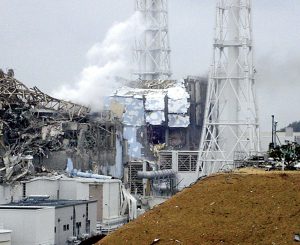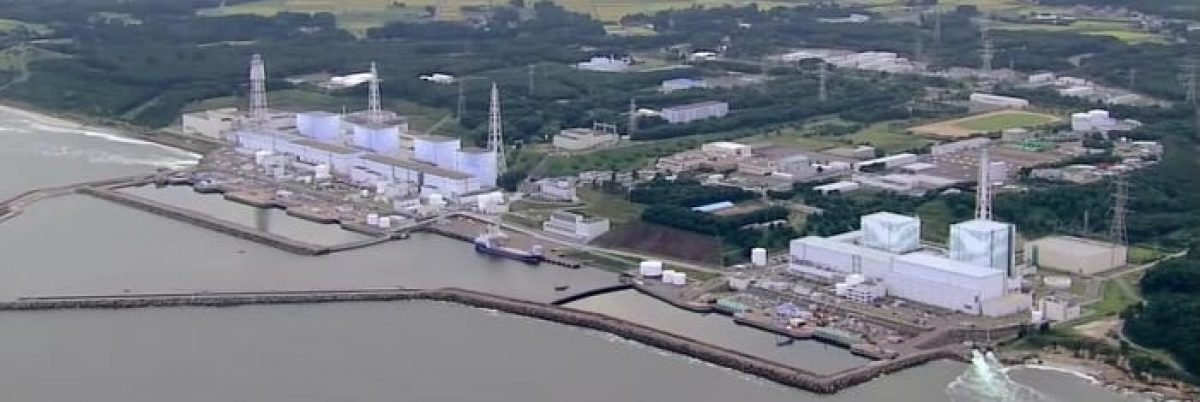Pre-2011
In the late 1950’s, Japan, faced with a lack of fossil fuels and hydroelectric resources, was searching for an energy source and settled on investing in nuclear power (Bernas 2019, 1367). This was before the scientific study of seismology or even plate tectonics emerged, so no thought was given to seismicity during the construction of these nuclear reactors (Bernas 2019, 1367). Despite the youth of seismology, in the decades leading up to the 2011 disaster, there was plentiful forewarning of such a disaster occurring. In the 1980’s, professor Koji Minoura determined that a severe earthquake and tsunami was long overdue; while scientists expressed interest in the prediction, government officials ignored the warning (Bernas 2019, 1366-9). On July 11, 869, a terrible earthquake spurred a tsunami that took 1000 lives in the Tohoku region but was largely forgotten (Bernas 2019, 1366). Only after the Fukushima disaster did attention turn to the Jogan 869 earthquake and tsunami as being a parallel event (Buhrman 2017, 159). Minoura studied the Jogan event and the seismological history of the region and published his findings in 2001 (Bernas 2019, 1366). Further back, early seismologist Kiyoo Mogi specifically cautioned against building nuclear reactors in Japan and warned of a dangerous earthquake and tsunami (Bernas 2019, 1368). The years that followed contained countless examples of regulatory neglect. Mansanori Hamada, an expert engineer, “was aware of the danger, but ‘progress’ was at stake” (Bernas 2019, 1370); the government and TEPCO colluded in refusal “to mention tsunami risks” (Bernas 2019, 1369). It is now clear that there was plentiful information about the threat of an earthquake and tsunami and even predictions of a nuclear meltdown, yet authorities choose to ignore the warnings in favor of profit, power, and progress.
Kristina Buhrman emphasizes how important historical memory is in mitigating risk and handling future disasters. In this case, the “record [had] been ignored and thus left the disaster unprepared for” (Buhrman 2017, 159). Since natural disasters like earthquakes and tsunamis occur on a geologic timescale, it is particularly difficult to compile historical records because they may take a wide variety of forms spanning many centuries (Buhrman 2017, 160). Unfortunately, historical memory, or lack thereof, can amplify future risks and damage. In the 1906 San Francisco disaster, the earthquake that caused the fires that tore through the city was largely forgotten (Dyl 2017, 77). In a similar sense, the Fukushima disaster is often remembered by the nuclear meltdown, not the earthquake and tsunami that killed many more people.
Chronology
The events of the 2011 disaster occurred over many days. On March 11, 2011, a 9.0 magnitude earthquake off the Sanriku coast resulted in multiple tsunamis that affected much of the Tohoku region in eastern Japan (Roberston and Pengilley 2012, 689). Despite hintings of past mega earthquakes, the media deemed this “the largest recorded earthquake in Japan’s history” (The Washington Post 2011). There were hundreds of seismic aftershocks, and, while estimates vary widely, Bernas estimates that 20,000 people died in the tsunami (Bernas 2019, 1365). There were a couple factors, such as wind, that are recognized as having prevented a drastically different and much worse outcome (Bernas 2019, 1365). It is interesting that such factors out of our control and regarded as “luck”, yet after the disaster we as humans immediately sought to assign blame and identify an objective cause. There is a fine line between what we consider to be left to fate and what is supposedly within our control.
While most nuclear power plants automatically shut down upon registering seismic activity, multiple plants situated near the coast were damaged in the tsunamis, with Fukushima Dai-chi being the worst; in response, Japan declared a State of Nuclear Emergency (Roberston and Pengilley 2012, 689). The Fukushima Dai-chi reactors were run by Tokyo Electric Power Company (TEPCO), which was a significant player throughout the disaster (Bernas 2019, 1365). In the days following the tsunami, a complex series of events unfolded including a nuclear meltdown and multiple explosions. For the purpose of this analysis, I will focus on the nuclear meltdown as opposed to the earthquake and tsunamis that preceded it.

As mentioned above, every nuclear plant that detected seismic activity automatically shut down as planned, stopping the process of nuclear fission (Grimston 2011). However, after the fission process stops, there is still an incredible amount of decay heat produced; water must continue to circulate to cool the fuel and avoid damage (Grimston 2011). After the initial power outage from the earthquake, backup diesel generators turned on to continue the cooling process. So far everything was working as expected. However, an hour later, the main tsunami arrived and damaged the diesel generators, cutting off the last power source (Grimston 2011). The oldest reactors, Fukushima Dai-chi units 1-3, were the only ones to not successfully go into a cold shutdown (the point where the fuel and decay heat is under control). Numerous factors contributed to what happened next. Attempts to release pressure build up resulted in hydrogen gas leaking and reacting with air, causing explosions in the outermost containment buildings at Unit 1 and later Unit 3 (Grimston 2011). Meanwhile, operators resorted to using sea water to continue the cooling process (Grimston 2011). The explosions exposed the spent fuel pools, where radioactive fuel is sent to cool. If the pools are not continuously cooled with water, radioactivity is released. This is one instance of radioactive material being released into the surrounding area. A second is a crack that was found in a tank containing used radioactive water, leaking the wastewater into the ocean (Grimston 2011). Eventually, every plant was cooled to the point of control.
Aftermath
In the aftermath of a disaster like this, communication is vital to any response. Remembering Chernobyl, after Fukushima, the International Commission on Radiological Protection and the Radiation Safety Forum Japan organized meetings with concerned people in the Fukushima prefecture about long-term recovery (Gariel, Rollinger, and Schneider 2018, 255). Focusing on response to the nuclear fallout, the effects mainly differed by proximity to the site, or at least perceived proximity. While disagreement is present, there seems to be a consensus that risk of long-term health effects from radiation was incredibly low. In a paper published in 2017, the authors conclude that “whilst there have been no radiation-induced deaths from the accident at Fukushima Dai-ichi, as estimated 1793 have lost their lives during the subsequent evacuation and relocation” (Ashley et al. 2017, 78). Another medical study concluded that “doses to the public from the accident in Fukushima were too low to give rise to a discernible excess risk for thyroid cancer” (Saenko et al. 2017, 1). Lastly, according to the government’s Reconstruction Agency, 2202 deaths were associated with “evacuation stress, interruption to medical care and suicide; so far, there has not been a single case of cancer linked to radiation from the plant” (Harding 2018). Despite the lack of direct effects of radiation, the mental and emotional effect of a radiological emergency are well documented and can be detrimental. The mental and emotional effects of perceived radiation exposure is examined further on the “Radiological Response” subpage.
As with every nuclear disaster, public opinion was heavily influenced by the event. After the Fukushima disaster, all nuclear plants in Japan were shut down for inspection (Polleri 2019, 569). Since then, restarting nuclear plants has occurred in a slow and contentious manner (World Nuclear Association 2020). A radical shift from the proposed expansion, the Japanese government now aims to eradicate nuclear power by 2035 (Chernov and Sornette 2016, 134).
